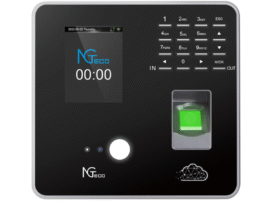Waking up drenched in sweat or constantly flipping your pillow to find the cool side can turn what should be restful sleep into a nightly struggle. For hot sleepers, body temperature regulation isn’t just about comfort—it’s essential for achieving the deep, restorative sleep your body needs. The mattress you choose plays a surprisingly significant role in how well your body disperses heat throughout the night. While some materials trap warmth against your body, others actively promote airflow and cooling.
The debate between hybrid and memory foam mattresses has become increasingly relevant for those who sleep hot. Each type offers distinct advantages, but their cooling capabilities differ substantially. Understanding how these mattresses manage heat retention can mean the difference between tossing and turning in discomfort and enjoying consistently cool, uninterrupted sleep. Whether you’re replacing an old mattress or purchasing your first quality bed, knowing which option works best for your body’s temperature needs will help you make an informed decision that transforms your sleep quality.
Understanding Hybrid and Memory Foam Mattresses
Hybrid and memory foam mattresses represent two fundamentally different approaches to sleep support and comfort. Memory foam mattresses consist primarily of dense polyurethane foam layers that contour closely to your body shape. When you lie down, the foam responds to your body heat and weight, creating a cradling sensation that many sleepers find comforting. This material was originally developed by NASA and has since become one of the most popular mattress materials due to its pressure-relieving properties.
Hybrid mattresses combine the best elements of traditional innerspring beds with modern foam comfort layers. At their core, hybrids feature a support system of individually wrapped coils or pocketed springs, topped with various comfort layers that might include memory foam, latex, or specialized cooling foams. This construction creates a mattress that offers both the responsive bounce of springs and the contouring comfort of foam. The coil system in hybrids allows for significantly more air circulation throughout the mattress structure compared to solid foam construction. This fundamental difference in design becomes particularly important when considering temperature regulation during sleep, as the open architecture of coils creates natural channels for heat dissipation that solid foam layers cannot replicate.
The Cooling Properties of Hybrid Mattresses
The inherent design of hybrid mattresses makes them naturally superior for temperature regulation compared to traditional all-foam options. The pocketed coil system at the heart of every hybrid creates open spaces that function as ventilation channels, allowing air to flow freely throughout the mattress. As you shift positions during the night, this movement pumps air through the coil layer, actively dispersing body heat rather than allowing it to accumulate. This continuous air circulation prevents the heat-trapping effect that plagues many solid foam mattresses.
Modern hybrid mattresses have evolved beyond simple coil-and-foam combinations to incorporate advanced cooling technologies specifically targeting hot sleepers. Many manufacturers now integrate phase-change materials into the top comfort layers, which actively absorb excess body heat when you become too warm and release it when your temperature drops. Gel-infused foams in the comfort layers provide additional cooling by conducting heat away from your body more efficiently than standard memory foam. The combination of breathable cover fabrics—often made from moisture-wicking materials like Tencel or specialized cooling fabrics—with the naturally ventilated coil system creates a multi-layered cooling approach. This engineered airflow system means hybrids typically sleep several degrees cooler than memory foam mattresses, making them the preferred choice for those who consistently struggle with nighttime overheating or live in warmer climates where bedroom temperature control is challenging.
Memory Foam: A Comfortable Alternative
Memory foam mattresses have earned their reputation through exceptional pressure relief and body contouring that few other materials can match. The viscoelastic properties of memory foam allow it to distribute your body weight evenly across the surface, eliminating pressure points that commonly develop at the shoulders, hips, and lower back. This makes memory foam particularly beneficial for side sleepers and those dealing with chronic pain conditions. The material’s ability to absorb motion also creates an undisturbed sleep environment for couples, as movement on one side of the bed doesn’t transfer to the other.
For hot sleepers, however, traditional memory foam presents challenges that manufacturers have worked to address through innovation. The dense cellular structure that creates memory foam’s signature contouring also restricts airflow, causing heat to accumulate around your body throughout the night. Recognizing this limitation, mattress companies have developed several cooling adaptations specifically for memory foam construction. Open-cell memory foam features a modified structure with larger pores that allow better air movement compared to traditional closed-cell foam. Plant-based memory foams incorporate natural oils that replace some petroleum-based components, resulting in a more breathable foam that doesn’t trap as much heat. Some manufacturers layer their memory foam with copper or graphite infusions that conduct heat away from the sleep surface. While these advancements have significantly improved memory foam’s temperature neutrality, the material still generally sleeps warmer than hybrid constructions due to its fundamentally dense nature that limits the natural ventilation coil systems provide.
Comparison: Coolness and Comfort
When directly comparing cooling performance, hybrid mattresses consistently outperform memory foam options for hot sleepers. The coil-based support system in hybrids allows ambient room air to circulate freely through the mattress core, creating a natural cooling mechanism that memory foam simply cannot replicate regardless of technological enhancements. Testing shows that hybrid mattresses typically maintain surface temperatures two to four degrees cooler than memory foam throughout the night. This temperature difference becomes more pronounced as the night progresses, with memory foam gradually accumulating body heat while hybrids continue dispersing it. For those who wake up overheated in the early morning hours, this sustained cooling advantage makes hybrids the clear winner in temperature regulation.
The comfort comparison, however, reveals more nuanced differences that depend heavily on individual preferences and sleep styles. Memory foam excels at providing that enveloping, pressure-free sensation that many sleepers associate with luxury comfort. The material eliminates motion transfer almost entirely, making it ideal for light sleepers sharing a bed. Hybrids offer a more responsive feel with gentle bounce from the coil system, which some sleepers prefer because it makes changing positions easier and prevents the “stuck in the mattress” feeling that deep memory foam contouring can create. Side sleepers often appreciate memory foam’s targeted pressure relief at the shoulders and hips, while back and stomach sleepers frequently favor the supportive responsiveness of hybrids that prevents excessive sinking.
For hot sleepers specifically, the decision often comes down to whether cooling or contouring takes priority. If temperature regulation is your primary concern and you frequently wake up sweating, a hybrid mattress will deliver noticeably cooler sleep even if you sacrifice some of memory foam’s signature pressure relief. Conversely, if you experience significant joint pain or pressure point discomfort but only occasional warmth issues, a cooling-enhanced memory foam might provide adequate temperature management while delivering superior pressure relief. Many hot sleepers find that hybrid mattresses offer the best overall balance, providing sufficient comfort and support while maintaining the consistent coolness necessary for uninterrupted sleep throughout the night.
Factors to Consider When Choosing a Mattress
Your budget will naturally influence which mattress type becomes accessible, with quality memory foam mattresses generally starting at lower price points than comparable hybrid models. The additional manufacturing complexity and materials required for hybrid construction—particularly the individually wrapped coil systems—typically add to the overall cost. However, viewing your mattress as a long-term investment in sleep quality and health makes the price difference less significant when spread across the seven to ten years a quality mattress should last. Brands like Novilla have made hybrid mattresses more accessible by offering quality construction at competitive price points, helping hot sleepers invest in better temperature regulation without breaking their budget.
Your primary sleep position significantly impacts which mattress type will serve you best. Side sleepers who need pressure relief at the shoulders and hips may find memory foam’s contouring beneficial, though a hybrid with substantial comfort layers can provide similar benefits with better cooling. Back sleepers often thrive on the responsive support hybrids offer, which maintains proper spinal alignment without excessive sinking. Stomach sleepers typically need the firmer, more supportive surface that hybrid construction naturally provides to prevent the lower back from sagging into an uncomfortable arch.
Beyond temperature concerns, consider your sensitivity to motion transfer if you share your bed, your body weight which affects how deeply you sink into different materials, and whether you prefer the feeling of sleeping “in” a mattress versus “on” one. Hot sleepers with partners should also discuss whether both experience temperature issues, as this may justify investing in a hybrid’s superior cooling even at a higher price point for mutual comfort throughout the night.
Tips for Hot Sleepers
Beyond choosing the right mattress type, hot sleepers can implement several practical strategies to further optimize their sleep temperature. Start by setting your bedroom thermostat between 60 and 67 degrees Fahrenheit, which sleep researchers identify as the ideal range for quality rest. If air conditioning isn’t available, position a fan to create air circulation across your bed, as moving air helps evaporate perspiration and prevents heat from settling around your body. Consider upgrading your bedding to moisture-wicking sheets made from bamboo, Tencel, or specialized cooling fabrics that pull heat and moisture away from your skin rather than trapping them like traditional cotton or synthetic materials.
Your mattress protector choice matters more than you might expect for temperature regulation. Skip the waterproof vinyl-backed protectors that create an impermeable heat-trapping layer, and instead select breathable protectors specifically designed for cooling that use moisture-wicking fabrics with ventilated backing. Take a cool shower before bed to lower your core body temperature, and avoid heavy meals, alcohol, or intense exercise within two hours of sleep, as these activities raise your metabolism and generate excess body heat. Keep a glass of cold water on your nightstand, as staying hydrated helps your body regulate temperature more effectively. Finally, if you’re not ready to replace your current mattress, adding a cooling mattress topper with gel infusion or phase-change materials can provide a temporary solution that significantly reduces heat retention until you’re prepared to invest in a hybrid mattress designed specifically for hot sleepers.
Making the Right Choice for Better Sleep
For hot sleepers, the choice between hybrid and memory foam mattresses comes down to prioritizing cooling performance alongside comfort needs. Hybrid mattresses emerge as the superior option for most people who struggle with nighttime overheating, thanks to their coil-based ventilation systems that actively disperse body heat throughout the night. The natural airflow channels created by pocketed coils, combined with modern cooling technologies in the comfort layers, deliver consistently cooler sleep that memory foam construction cannot match regardless of enhancements. While memory foam offers exceptional pressure relief and motion isolation, its dense structure inherently retains more heat, making it less suitable for those who regularly wake up sweating.
Your final decision should balance temperature regulation with other personal sleep needs including pressure relief requirements, preferred sleep position, budget constraints, and whether you value contouring comfort over responsive support. If cooling is your absolute priority and you frequently experience sleep disruption from overheating, investing in a quality hybrid mattress will likely provide the most noticeable improvement in your sleep quality. Pair your mattress choice with complementary cooling strategies like breathable bedding, optimal room temperature, and proper ventilation to create a complete sleep environment that keeps you comfortable throughout the night. Remember that quality sleep directly impacts your health, productivity, and overall wellbeing, making the right mattress choice an investment worth careful consideration.











